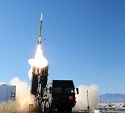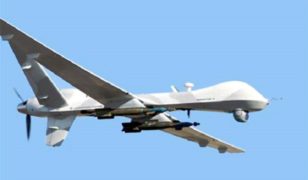MEADS network tests demonstrate missile defense capabilities

The Medium Extended Air Defense System (MEADS) recently completed a comprehensive system demonstration at Pratica di Mare Air Base near Rome, Italy. The two-week test demonstration included significant first-time events that were observed by several national delegations.
“The outstanding result is that we have demonstrated the full range of advanced network capabilities that only MEADS can provide,” said MEADS International Executive Vice President Volker Weidemann. “These ground-breaking capabilities are ready to be carried forward to meet national needs.”
The tests, including operational demonstrations run by German and Italian military personnel, were designed to seamlessly add and subtract system elements under representative combat conditions, and to blend MEADS with other systems in a larger system architecture:
- Using plug-and-fight (the military equivalent of plug-and-play that enables automatic integration of disparate system elements into a single super-system), MEADS demonstrated its ability to rapidly attach and control an external Italian deployable air defense radar. As a fully integrated asset in the MEADS network, the radar tracked air objects and supplied a common integrated air picture of the area around Pratica di Mare. MEADS operators were able to rapidly recognize, incorporate, control, remove, re-allocate and re-position launchers and sensors during engagement operations.
- Using an external sensor and track data provided via the Link 16 data-exchange network, MEADS engaged a simulated cruise missile and other threats simultaneously. This demonstrated MEADS’ engage-on-remote flexibility, which allows operators to target threats at greater distances despite being masked by terrain.
- Using the MEADS netted and distributed network architecture, the system automatically selected the best launcher for target engagement and demonstrated control of engagement operations from each battle manager. This proved that by re-assigning workload, MEADS can maintain defense capabilities if any system element is lost or fails.
- Interoperability with German and Italian air defense assets was demonstrated through exchange of standardized NATO messages. Key Italian air defense assets were integrated into a test bed at an Italian national facility, while the Surface to Air Missile Operations Centre and Patriot sets were integrated into a test bed at the German Air Force Air Defense Center in Fort Bliss, TX. MEADS further demonstrated capability to perform engagement coordination with other systems, which no fielded system is able to do.
“No other ground-mobile air and missile defense system has MEADS’ ability to plug-and-fight sensors and launchers,” said MEADS International President Dave Berganini. “It is important to note that German and Italian military personnel were able to use the advanced capabilities of the system and its tactical battle management software after a short training course.”
The mobile MEADS system has been developed to destroy all incoming tactical or medium-range ballistic missiles, cruise missiles, weapons of mass destruction, aircraft and unmanned aerial vehicles. Compared to existing systems, it provides vastly greater firepower, combat-proven hit-to-kill technology, 360-degree radar coverage and a plug-and-fight battle management network architecture.
Its open architecture provides system-of-system integration capabilities that allow operational mission-tailoring for homeland defense or defense of maneuver forces. MEADS also provides greater firepower with less manpower than current systems, producing significant operation and support cost savings.
MEADS International, a multinational joint venture headquartered in Orlando, FL, is the prime contractor for the MEADS system. Major subcontractors and joint venture partners are MBDA in Italy and Germany, and Lockheed Martin in the U.S.
Tags:
metered







